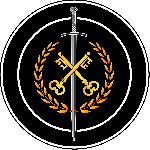Fiore dei Liberi Fior di Battaglia (1409) – It is the first complete manual known of an Italian system that came to influence later masters and systems. The set of weapons is very broad, including dagger, polearms, among others, but the manual is best known for its long sword techniques.
Anonymous Bolognese MSS Ravenna M-345/346 (1510) – Bologna tradition manual. The central weapon of this manual is, as in the case of other manuals from the same school, the spada di lato, but polearms and how to counter them is also addressed.
Ridolfo Capo Ferro’s The Great Simulation of the Art and Use of Fencing (1610) – A treatise focusing on the Rapier following the Italian tradition. Both the sword type and the treatise found great popularity back in their time – which parallels its popularity nowadays. The treatise itself covers not only the use of the single Rapier, but also its many companions like the main gauche Dagger, Cloak and Rotella.
Domenico Angelo The School of Fencing (1787) – French tradition manual. Angelo began his career in Paris but lived most of his life in England, where he published his L’École des armes (1763). The work was reissued by his son, Henry Angelo, in 1787 and in English, with illustrations copied from Diderot’s Encyclopédie. The manual deals with smallsword and fencing foil, the use of dagger, cape, and lantern, but also smallsword against military saber (or broadsword, as the manual states).
Charles Roworth’s The Art of Defence on Foot (1798 – 1824) – Manual used by the British military during the Napoleonic period. It was first published in 1798 with a second edition later that year. In 1804 another edition was published with the work being revised and improved. Lastly in 1824, there was a north American re-print of the same work published in 1804. Considering it was a manual aimed at the use of the Military Sabre on foot, it not only covers this weapon (both light and heavy cavalry sabres) but others such as the Broadsword and the Spadroon. The system itself is a continuation of the Highland Broadsword tradition, improved and adapted to the weapons that followed it and were popular during the period.
